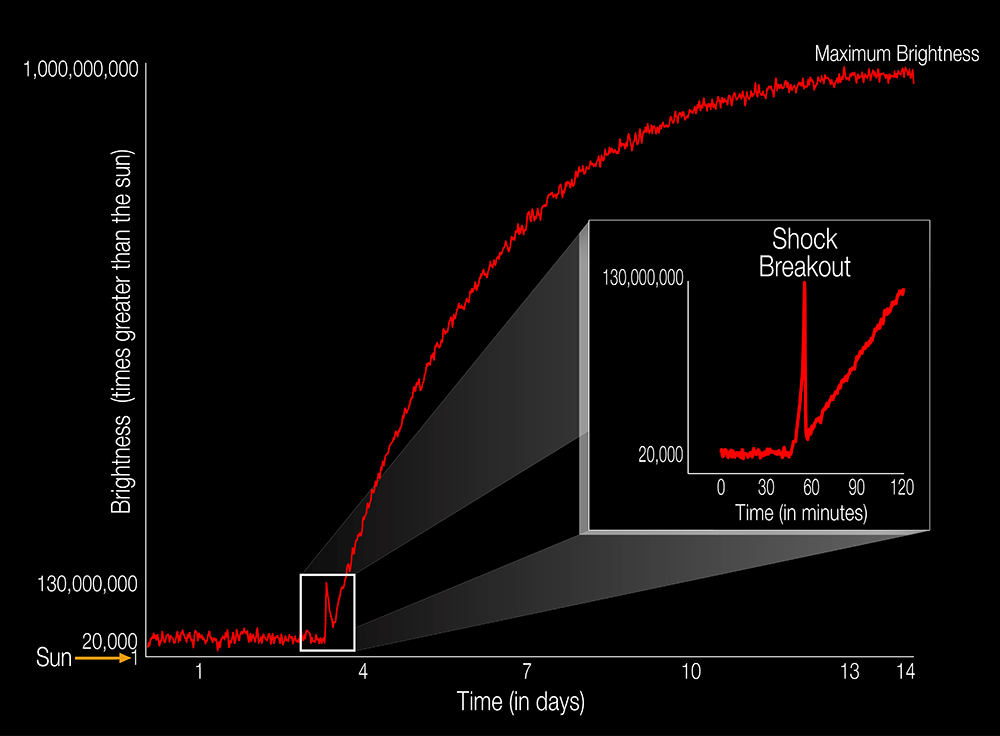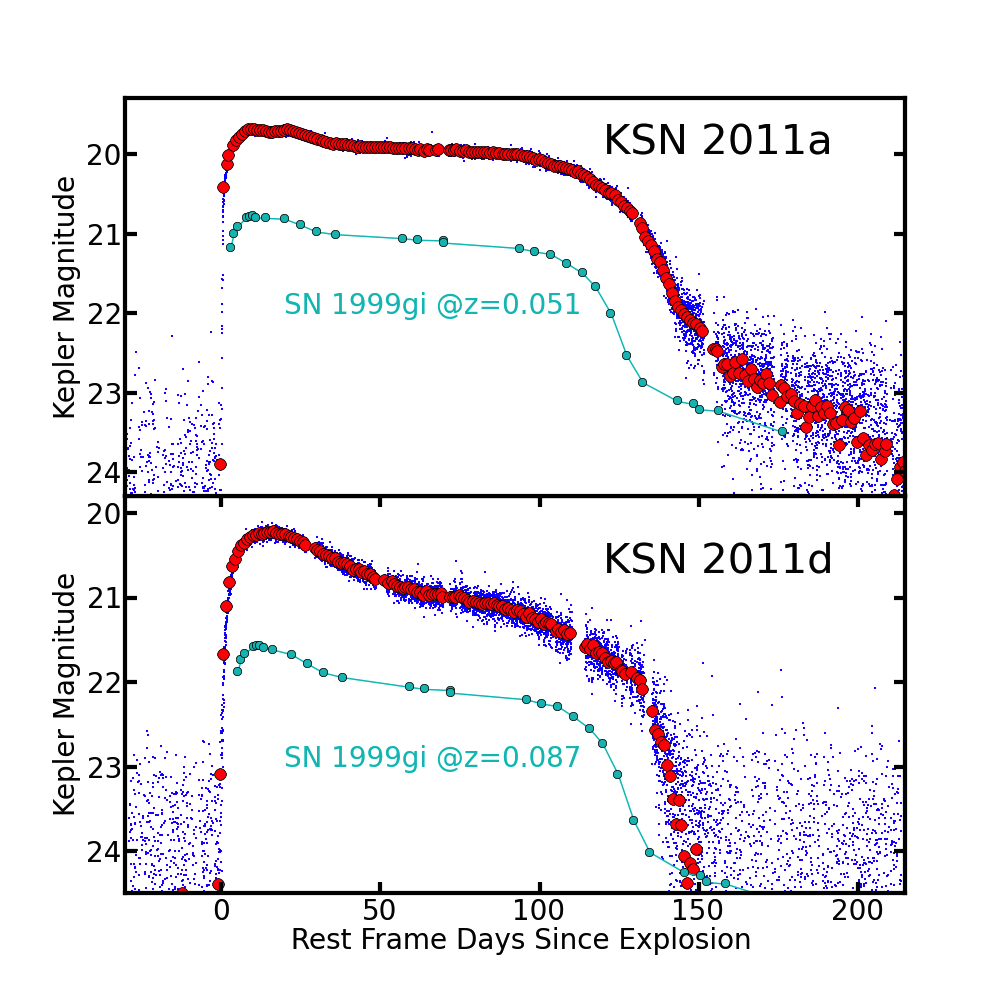Telescope for the first time removed a shock flash supernova in the visible range

KSN 2011d luminosity relative to the Sun
A bright flash of an explosion shock wave at the beginning of the formation of a Type II supernova — what astronomers call shock shockout — was first recorded by the Kepler space telescope in the visible range.
In 2011, the Kepler telescope, which has now been out of order, accidentally filmed the explosions of two stars: KSN 2011a and KSN 2011d. A group of scientists led by professor of astrophysics Peter Garnavich (Peter Garnavich) from the University of Notre Dame conducted an analysis of the data and published the results in the Astrophysical Journal .
KSN 2011a with a mass of 300 solar is at a distance of 700 million light years from Earth, and KSN 2011d is at a distance of 1.2 billion light years. The red supergiant KSN 2011d is 500 times the size of the Sun, and the Earth’s orbit around the Sun fits perfectly with its dimensions.
With a supernova explosion, a huge amount of energy is released. In a few minutes, the brightness of KSN 2011d increased from 20,000 solar to 130,000,000, and the “breakthrough” itself occurred almost instantly.
NASA created an animation that illustrates a shock flash of a supernova type II.
The observation of the KSN 2011a and KSN 2011d flashes showed that they fit well into the mathematical model of type II supernova explosions.

At the same time, it was revealed that in different stars the process of destruction proceeds with its own characteristics.

